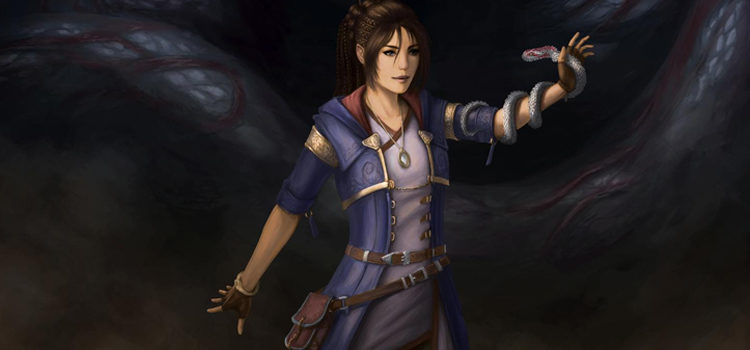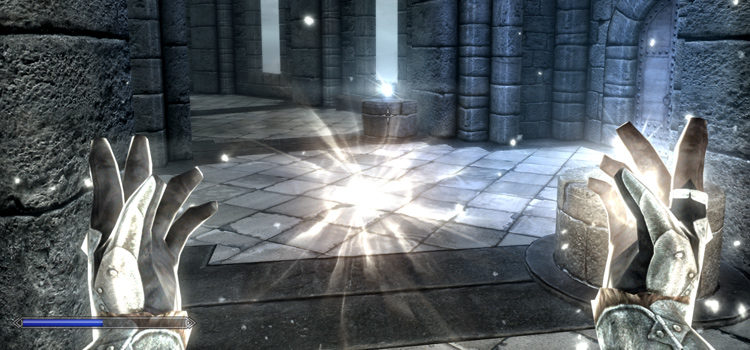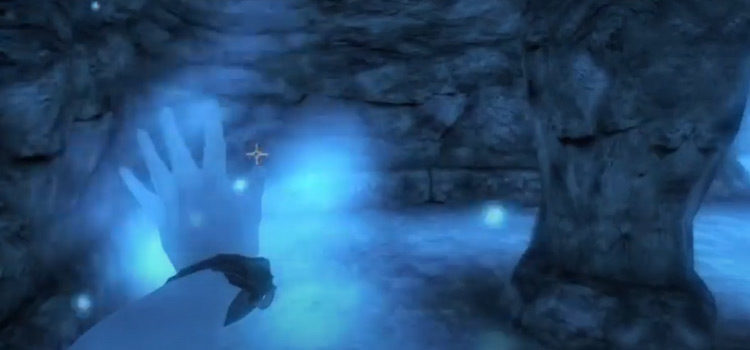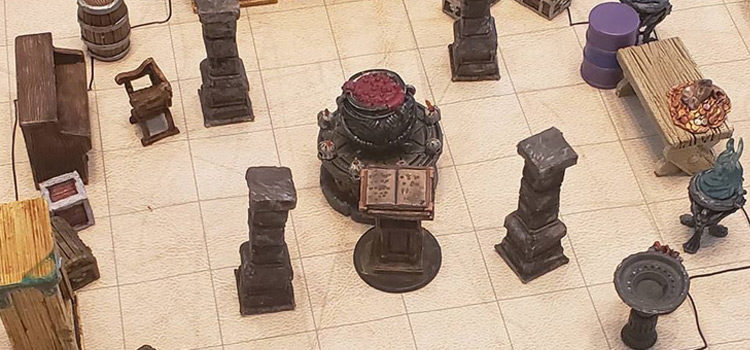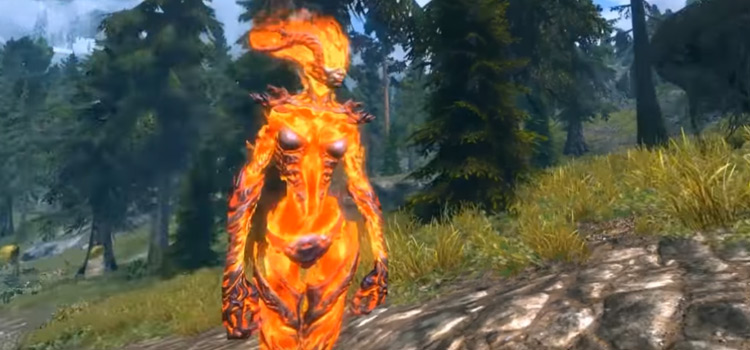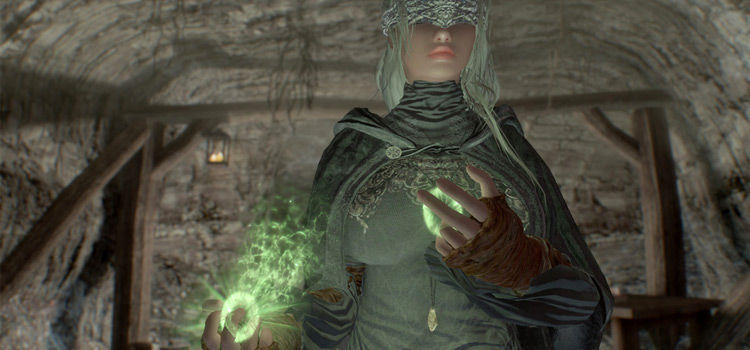15 Best Warlock Spells In D&D 5e
This post may contain affiliate links. If you buy something we may get a small commission at no extra cost to you. (Learn more).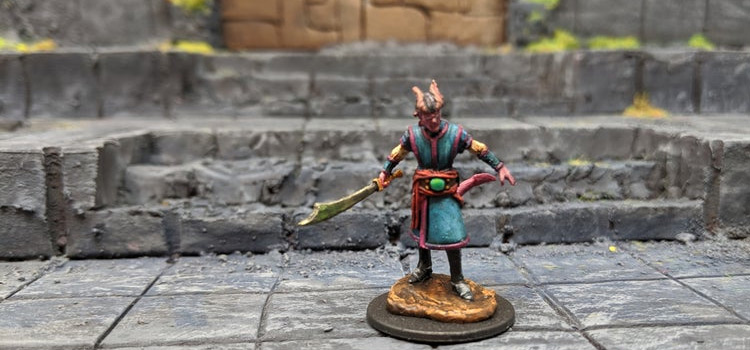
As one of the most unique spellcasters in Dungeons & Dragons 5th Edition(D&D 5e), Warlocks rely on a combination of powers from their patron, their pacts, invocations, and their spellcasting method known as Pact Magic.
Warlocks have very few Pact Magic slots which refresh every short rest—as opposed to the long rest required for other spellcasters.
With a limited number of known spells, Warlocks should carefully evaluate their choices and pick spells that can serve them well.
As I prefer versatile spellcasters, I lean into that approach even while designing Warlock characters. And my list here reflects that choices I would take during play.*
*NOTE: This list includes only 1st-level spells and higher. Spell levels mentioned here refer to that spell’s minimum spell slot level.
15. Hypnotic Pattern
Source: Player’s Handbook
Warlocks gain access to this effective 3rd-level crowd control spell.
Hypnotic pattern targets creatures in a 30-foot cube.
Any who fail and are susceptible to charm effects, immediately become incapacitated.
But targets can shake off the spell by taking damage or by another creature rousing them.
14. Hold Person/Hold Monster
Source: Player’s Handbook
Hold person (2nd-level) and hold monster (5th-level) inflict the paralyzed condition on targets that fail their Wisdom saves.
This condition prevents targets from acting until they successfully save against the effect at the end of their turns.
Paralyzed targets are easier to hit by granting advantage on attack rolls against them, and an attack critically hits if the attacker is within 5 feet of a paralyzed target.
Hold person only targets humanoid creatures, while hold monster can target any creature except for undead.
13. Psychic Scream
Source: Xanathar’s Guide to Everything
Like other spellcasters in 5e, 9th-level spells represent the pique of magical prowess.
Warlocks have access to a handful of such potent spells, though most adventurers don’t reach the point of casting them.
A more recent option, psychic scream unleashes a mental blast targeting up to 10 creatures (though creatures with Intelligence scores of 2 or lower aren’t affected).
The spell deals 14d6 psychic damage and stuns targets on a failed Intelligence save.
While targets can attempt a save to end the effect in subsequent turns, they might just stay indefinitely stunned since many creatures have low Intelligence saving throw bonuses.
12. Evard’s Black Tentacles
Source: Player’s Handbook
Evard’s black tentacles (4th-level) summons a mass of black tentacles within a 20-foot square, possibly restraining creatures within the area.
Moreover, affected creatures take 3d6 bludgeoning damage when they become restrained and at the start of each of their turns.
Breaking out of the spell requires spending their action to escape and a successful Strength or Dexterity check, a combination which can prove very punishing in combat.
For Warlocks with the Great Old One patron, this spell gets bonus consideration for fitting extremely well with the Eldritch abomination theme.
11. Summon Greater Demon
Source: Xanathar’s Guide to Everything
This 4th-level spell lets you bring forth a powerful demon from the Abyss to do your bidding.
The spell can be fun to play out, too, since you play with a measure of risk by summoning such creatures: a demon might break from your control and turn hostile towards you and your allies.
However, ways exist to reduce the chances of this occurrence.
As you gain higher-level slots you can also summon more powerful demonic underlings.
For Warlocks with the Fiend patron, this spell fits the patron’s theme well.
10. Sickening Radiance
Source: Xanathar’s Guide to Everything
This potent 4th-level spell “sickening radiance” can deal 4d10 radiant damage in a 30-foot radius sphere.
Creatures that start their turn in, or enter, the sphere attempt a Constitution save against the spell; on a failure, they suffer damage and gain one level of exhaustion.
Though these exhaustion levels go away once the spell ends (which can last for up to 10 minutes), stacking them can still inflict severe penalties on a creature. And possibly lead to death at six levels.
Inflicting exhaustion is an extremely rare mechanic for players, so sickening radiance stands out among the rest.
9. Banishment
Source: Player’s Handbook
This 4th-level spell can remove a targeted creature from play.
Banishment requires a Charisma saving throw, and monsters often have lower bonuses to that save.
Additionally, extraplanar creatures that fail the save become permanently banished if you maintain concentration for the entire one-minute duration.
When cast with a higher-level slot, banishment also targets additional creatures for each level above 4th.
8. Dominate Monster
Source: Player’s Handbook
This 8th-level spell allows a Warlock to charm a creature that fails a Wisdom save.
While under this effect, a creature essentially acts as your ally; they must follow your orders to the best of their ability, and you can even take control of their specific actions.
This domination lasts for up to an hour, though the creature can attempt a saving throw whenever it suffers damage.
Dominate monster is notable compared to lower-level dominate spells, because it affects any creature type—so long as a specific target has no immunity to being charmed.
7. Armor of Agathys
Source: Player’s Handbook
This 1st-level spell provides a no-concentration buff that grants five temporary hit points (temp HP) for one hour.
When another creature hits you with a melee attack while you have this temp HP, your attacker automatically suffers five cold damage.
When you cast this spell with a higher-level spell slot, both the temp HP and the damage increases by another five for each spell level above 1st.
Since Pact Magic always casts spells at the highest possible level (to a maximum of 5th-level spells), you can get extra temp HP and damage from this spell as your character grows more powerful.
6. Suggestion/Mass Suggestion
Source: Player’s Handbook
Both suggestion (2nd-level spell) and mass suggestion (6th-level spell) can hinge on your Dungeon Master’s interpretations to reach their full potential.
These spells compel creatures that can understand you, and that aren’t immune to being charmed, to pursue an order/activity. Though the request can’t put the targets in harm’s way or seem too unreasonable.
With enough creativity these spells can help Warlocks maneuver social situations, diffuse a combat encounter, and more.
Mass suggestion is mechanically superior since it can target up to 12 creatures, requires no concentration, and has a 24-hour duration.
But Warlocks can access suggestion much earlier and can use it more often. Definitely worth looking into.
5. Dimension Door
Source: Player’s Handbook
Yet another potent 4th-level spell, Warlocks shouldn’t underestimate the value of a 500-foot range teleport.
You can even take along another creature (of the same size or smaller as you).
Since you teleport to any point within range, whether you see your destination or not, this spell comes in handy as a tool for repositioning. Or from escaping an enemy to infiltrate a secure area!
4. Misty Step
Source: Player’s Handbook
Misty step, a 2nd-level spell, might eventually save your life—or make you regret not taking it.
As the Warlock’s earliest teleportation option, it provides invaluable mobility.
This allows you to instantaneously move up to 30 feet and reappear in a spot that you can see.
During your adventures you’ll eventually need to escape from an enemy that’s managed to reach you, or overcome an obstacle like a chasm or steep incline. It’s common on most adventures!
So Misty step gives you the solution you need for such situations.
3. Counterspell
Source: Player’s Handbook
In 5e, players have few means to disrupt an enemy’s spellcasting.
However Warlocks have access to counterspell, a 3rd-level reaction spell.
When you see another creature casting a spell within 60 feet of you, you can cast this to disrupt the target; doing so negates their spell entirely, dependent on the level of the spell being countered and(if required) the result of a spellcasting ability check.
Counterspell becomes especially useful on a Warlock since they always cast it at the highest Pact Magic slot level they have. Which also makes counterspell more inherently powerful.
2. Invisibility/Greater Invisibility
Source: Player’s Handbook
Invisibility (2nd-level) has fantastic uses, as you can turn yourself or another creature… well, invisible.
While affected by invisibility (which lasts for up to an hour and so long as the invisible creature doesn’t attack or cast spells), a creature can’t be seen.
This opens up opportunities for infiltration, escape, and even ambushes.
Greater invisibility (4th-level spell) provides more combat-centric benefits, as attacking and casting spells don’t automatically end the effect.
With invisibility, a Warlock casts it at their highest Pact Magic slot level. So you target more creatures as you increase your spellcasting progression.
Overall, having one or both invisibility spells helps both your utility and potency in combat.
1. Hex
Source: Player’s Handbook
Arguably the most well-known Warlock spell, hex is immediately available as a 1st-level spell—best taken early in your adventuring career.
When you target a creature with hex and hit it with an attack, you can deal an additional 1d6 necrotic damage to it.
The spell combos extremely well with the eldritch blast cantrip, along with any spells or actions that grant you additional attacks.
Hex’s other effect causes the targeted creature to have disadvantage on ability checks using an ability score of your choice.
This penalty can synergize with the likes of a grappler, or impose a disadvantage on crucial rolls (like initiative).
Any damage-focused Warlock should take hex, though it’s a decent all-around spell too.
